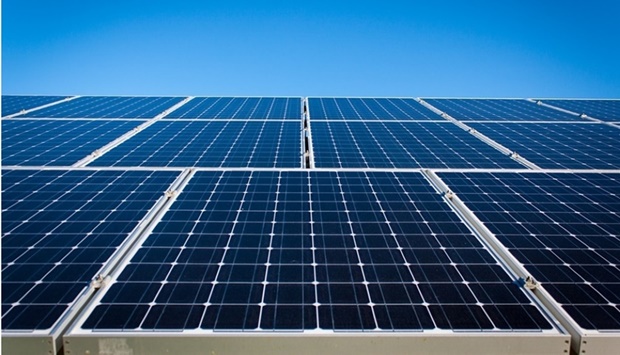Qatar is set to cross a major milestone when the 800MW Al Kharsaah solar plant will be inaugurated at a high-profile event on October 18.
The project represents a milestone in Qatar’s energy history and it set to meet 10% of its peak electricity demand at full capacity and reduce CO2 emissions by 26mn metric tonnes over its lifespan.
It is also a major step towards Qatar’s goal of achieving production of 5GW of solar power by 2035, QatarEnergy had said earlier.
Al Kharsaah Solar PV Independent Power Producer (IPP) Project is the country’s first large-scale solar power plant and is set to significantly reduce the environmental footprint.
The project is owned and operated by Siraj 1 SPV, a consortium jointly owned by TotalEnergies & Marubeni (40%) and Siraj Energy (60%), the latter being a joint venture between QatarEnergy and QEWC (Qatar Electricity and Water Company).
Set to become the world’s largest solar power plant equipped with high-efficiency, half-cut bifacial solar modules, the 800MWp Al Kharsaah Solar PV IPP Project will cover 10 square kilometres (the equivalent of roughly 1,400 soccer fields) and will feature 2mn modules mounted on trackers. This will enable substantial power gains by taking full advantage of the region’s exceptional sunshine.
In addition, the use of 3,240 installed string inverters will further increase annual yield by allowing for better tracking of the maximum power point at the string level.
The plant will also feature a semi-automated cleaning system for the solar modules that cleans the dust and sand off every single module once every four days.
In terms of power generation, the Al Kharsaah plant has a full capacity of 800MWp that will be built in two phases of 400MWp each.
During its first year of operation (P50 Year 1), it is expected to generate almost 2,000,000MWh, the equivalent energy consumption of approximately 55,000 Qatari households.
According to the International Energy Agency’s Sustainable Development Scenario, renewable energies will represent more than 35% of the world’s energy mix in 2040.
In London recently, HE the Minister of State for Energy Affairs, Saad bin Sherida al-Kaabi highlighted Qatar’s role in reducing gas emissions and carbon footprint and cited the inauguration of the Al Kharsaah solar power station.
The project represents a milestone in Qatar’s energy history and it set to meet 10% of its peak electricity demand at full capacity and reduce CO2 emissions by 26mn metric tonnes over its lifespan.
It is also a major step towards Qatar’s goal of achieving production of 5GW of solar power by 2035, QatarEnergy had said earlier.
Al Kharsaah Solar PV Independent Power Producer (IPP) Project is the country’s first large-scale solar power plant and is set to significantly reduce the environmental footprint.
The project is owned and operated by Siraj 1 SPV, a consortium jointly owned by TotalEnergies & Marubeni (40%) and Siraj Energy (60%), the latter being a joint venture between QatarEnergy and QEWC (Qatar Electricity and Water Company).
Set to become the world’s largest solar power plant equipped with high-efficiency, half-cut bifacial solar modules, the 800MWp Al Kharsaah Solar PV IPP Project will cover 10 square kilometres (the equivalent of roughly 1,400 soccer fields) and will feature 2mn modules mounted on trackers. This will enable substantial power gains by taking full advantage of the region’s exceptional sunshine.
In addition, the use of 3,240 installed string inverters will further increase annual yield by allowing for better tracking of the maximum power point at the string level.
The plant will also feature a semi-automated cleaning system for the solar modules that cleans the dust and sand off every single module once every four days.
In terms of power generation, the Al Kharsaah plant has a full capacity of 800MWp that will be built in two phases of 400MWp each.
During its first year of operation (P50 Year 1), it is expected to generate almost 2,000,000MWh, the equivalent energy consumption of approximately 55,000 Qatari households.
According to the International Energy Agency’s Sustainable Development Scenario, renewable energies will represent more than 35% of the world’s energy mix in 2040.
In London recently, HE the Minister of State for Energy Affairs, Saad bin Sherida al-Kaabi highlighted Qatar’s role in reducing gas emissions and carbon footprint and cited the inauguration of the Al Kharsaah solar power station.




